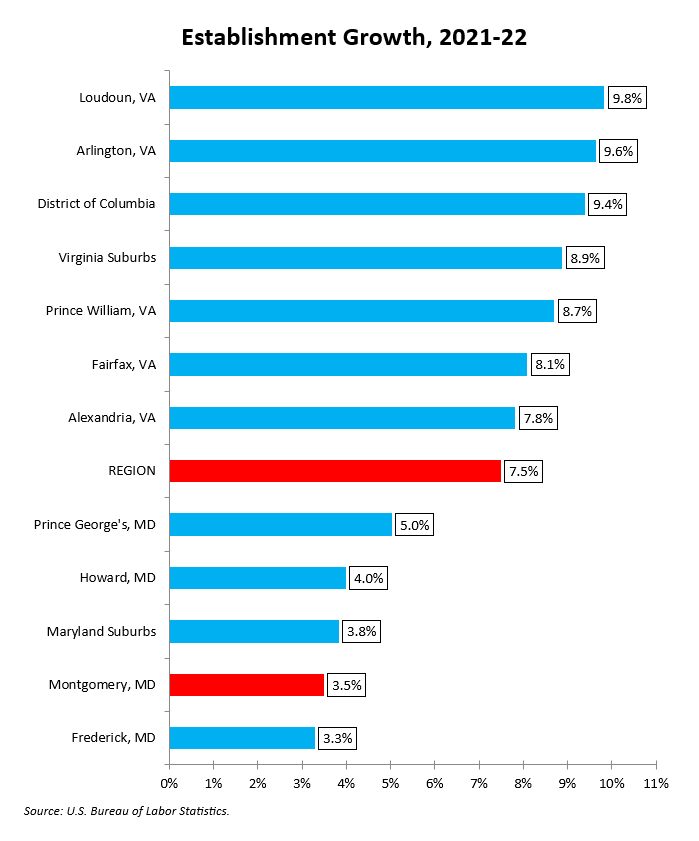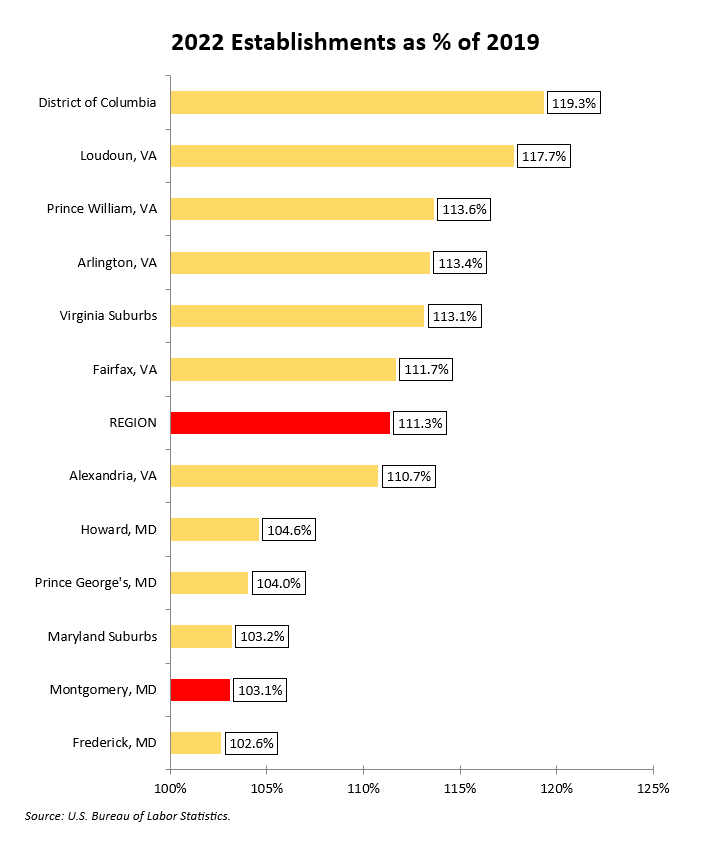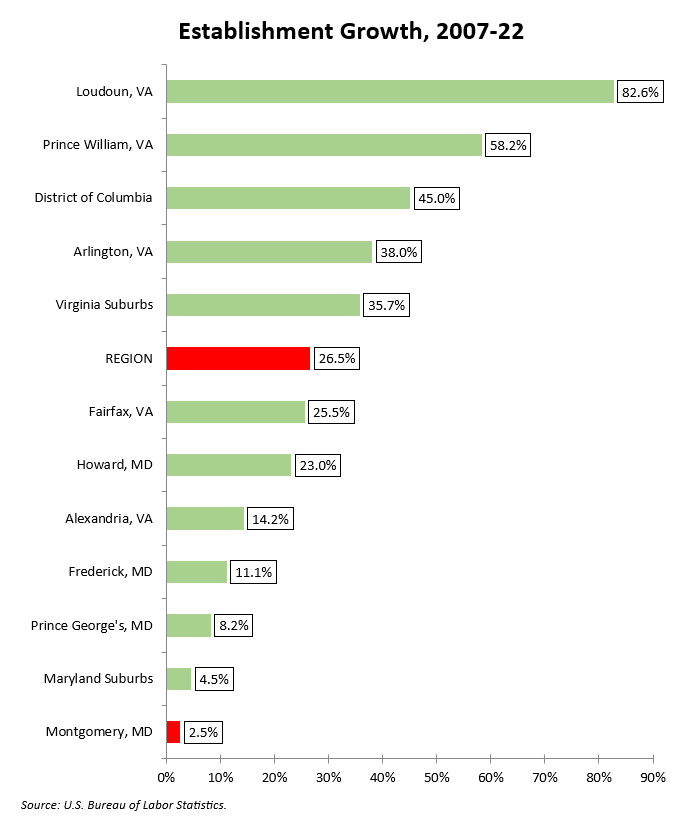By Adam Pagnucco.
Part One examined total employment over three time intervals and Part Two examined private sector employment. Now let’s look at establishments.
The U.S. Bureau of Labor Statistics uses the following definition of establishments.
*****
Economic unit that produces goods or services, usually at a single physical location, and that is engaged in one or predominantly one type of economic activity.
Note: A single establishment generally produces a single good or provides a single service. An enterprise (a private firm, government agency, or nonprofit organization) can consist of a single establishment or multiple establishments. All establishments in an enterprise may be classified into one industry (e.g., a chain); into different industries (e.g., a conglomerate); or into an economic unit that produces goods or services, usually at a single physical location, and that is engaged in one or predominantly one activity (e.g., a factory, a mine, a store, or an office). In the National Compensation Survey, for sampled private industries, the establishment usually is at a single physical location, such as a mine, a factory, an office, or a store, that produces goods or provides services. If a sampled establishment is owned by a larger entity with many locations, only the employment and characteristics of the establishment selected for the sample are considered for the survey. For state and local government, an establishment can include more than one physical location, such as a school district, a police department, a fire department, a health or social service operation, a highway maintenance operation, an urban transit operation, or some other governmental unit. Each establishment is assigned a six-digit North American Industry Classification System (NAICS) code to reflect its primary economic activity.
*****
So this is not a count of firms but rather a count of locations at which business operations occur. The chart below shows one-year growth by jurisdiction and for the Washington-Arlington-Alexandria region as a whole.

Last year, Montgomery County added establishments at less than half the region’s rate. Only Frederick County fared worse.
The chart below shows 2022 establishments as a percentage of the pre-pandemic establishments in 2019.

Every jurisdiction has surpassed its pre-pandemic establishment count. Montgomery County is close to the bottom on this measure with Frederick again faring worse.
Now let’s look at the 15-year history of establishments. The base year, 2007, was the year before the Great Recession

Among the region’s large jurisdictions, Montgomery County ranks dead last. The region as a whole has added establishments at ten times the rate of Montgomery County.
In Part Four, we will examine total wages paid.
